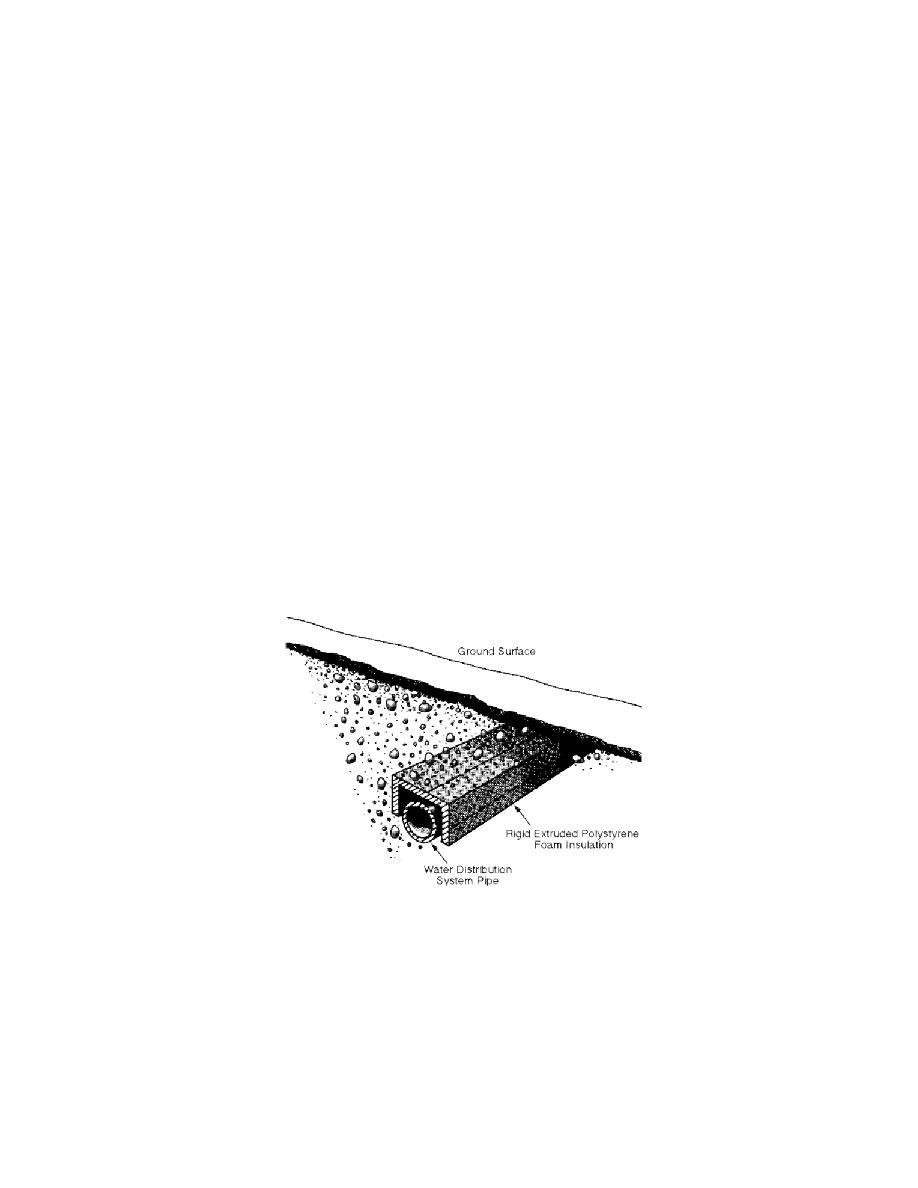
Frost-Shielding Methodology and Demonstration for
Shallow Burial of Water and Sewer Utility Lines
BARRY A. COUTERMARSH AND DAVID L. CARBEE
INTRODUCTION
been needed is avoided, and time savings are asso-
In climates that experience freezing tempera-
ciated with excavating and backfilling a smaller
tures, water and sewer pipes are normally buried
trench. Reducing the burial depth to less than 1.52
below the depth of maximum frost penetration. In
m (5 ft) also eliminates the OSHA shoring require-
some areas of the country, this design depth can
ment, and can substantially decrease expense and
reach 2.5 m (8 ft) (Nayyar 1992). A shallower
increase productivity.
trench is desirable in many situations. If ledge is
One of the major impediments to insulating pipe-
present, the cost of blasting and removing it can
lines routinely is the lack of design guidance for the
make the excavation quite expensive. Further-
insulation configuration and thickness. The design
more, frost penetration
of the shield is affected
is normally deeper in
by the variables of cli-
ledge than in other
mate, burial configura-
soils, thus exacerbating
tion, soil characteristics,
the situation. If the in-
and pipe temperature.
situ material is envi-
The designer must also
ronmentally sensitive
choose an acceptable
or otherwise difficult or
"freeze time," i.e., an
expensive to excavate, a
amount of time before
shallower trench could
the pipe freezes if there
save both time and
is no flow (and thus no
money. If isolated ob-
heat) within it. CRREL
structions or other util-
has developed a finite
ities are encountered
element (FE) program
during the pipe instal-
that allows the designer
lation, an elevation
to assess the impact of
change over the ob- Figure 1. Example of inverted-U frost shield around pipe- each of the variables and
struction might be de- line.
see how the changes
sirable.
affect the freeze time.
Frost shielding is the technique of placing
The program models two-dimensional subterra-
insulation in some configuration around a pipe to
nean heat flow, with phase change, and describes
protect the pipe from freezing, as shown in Figure
the results both numerically and visually using
1. The increased cost of the insulation and the time
graphs and contour plots. This program allows the
to install it are balanced by savings in time and
designer to create several different shield configu-
money afforded by decreased burial depth: a
rations and assess the thermal performance of
smaller amount of material needs to be removed
each. A cost analysis can then be performed to
and discarded, the extra backfill that would have
determine the most efficient shield design to use.




 Previous Page
Previous Page
